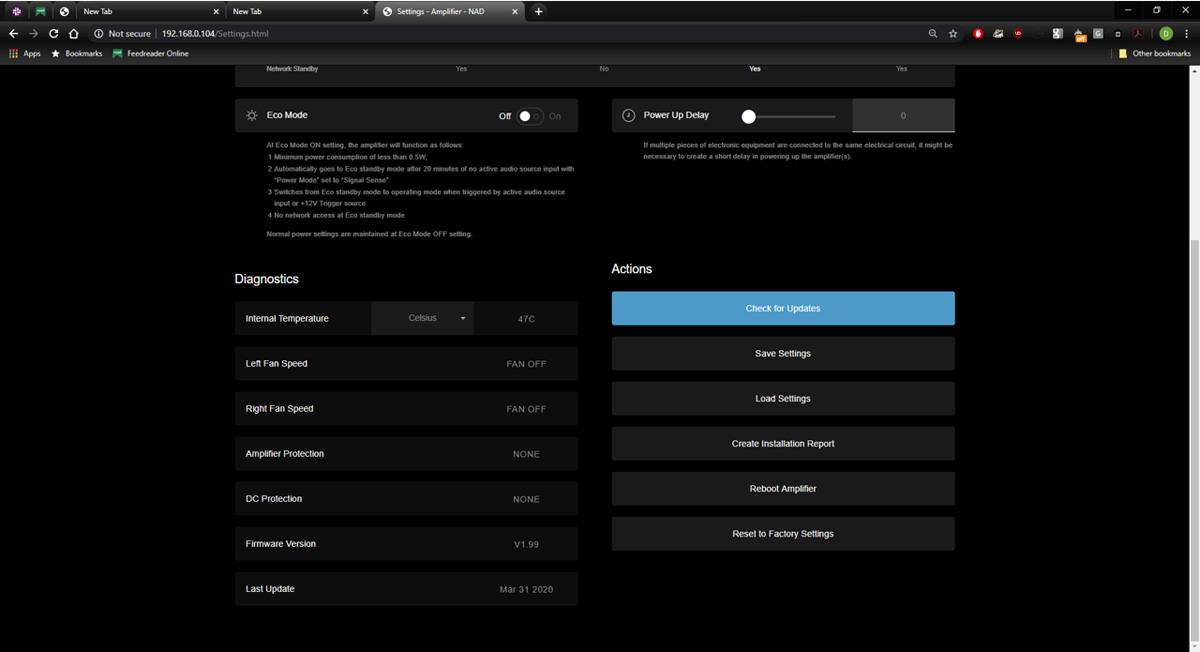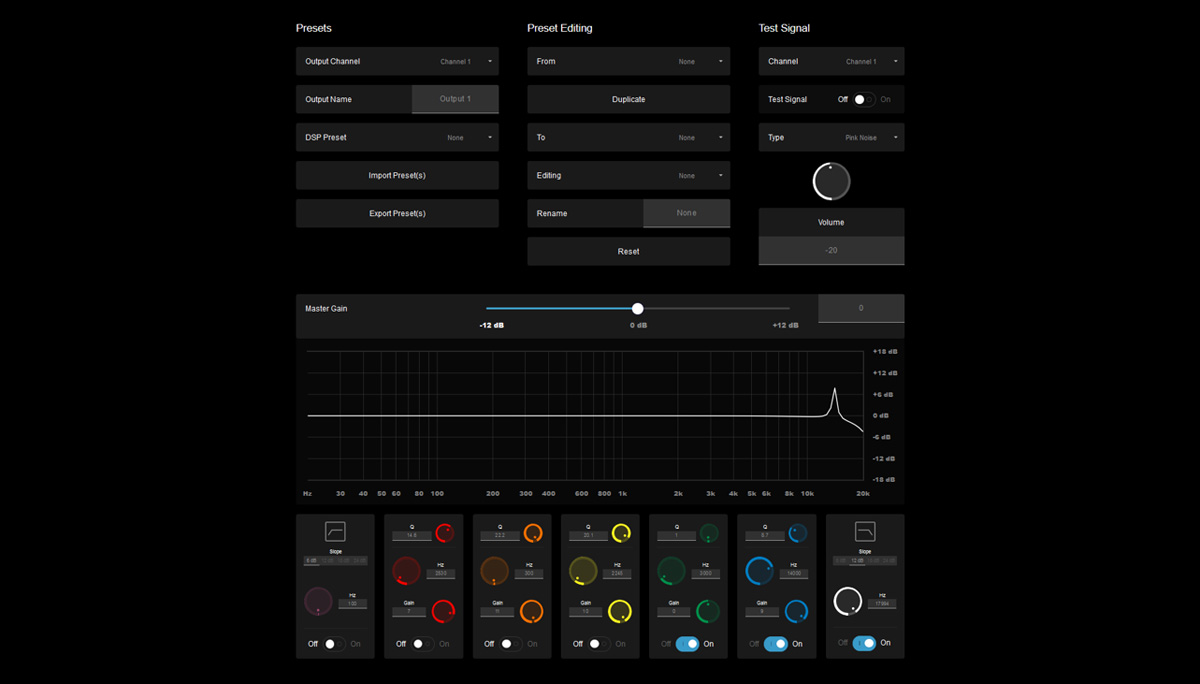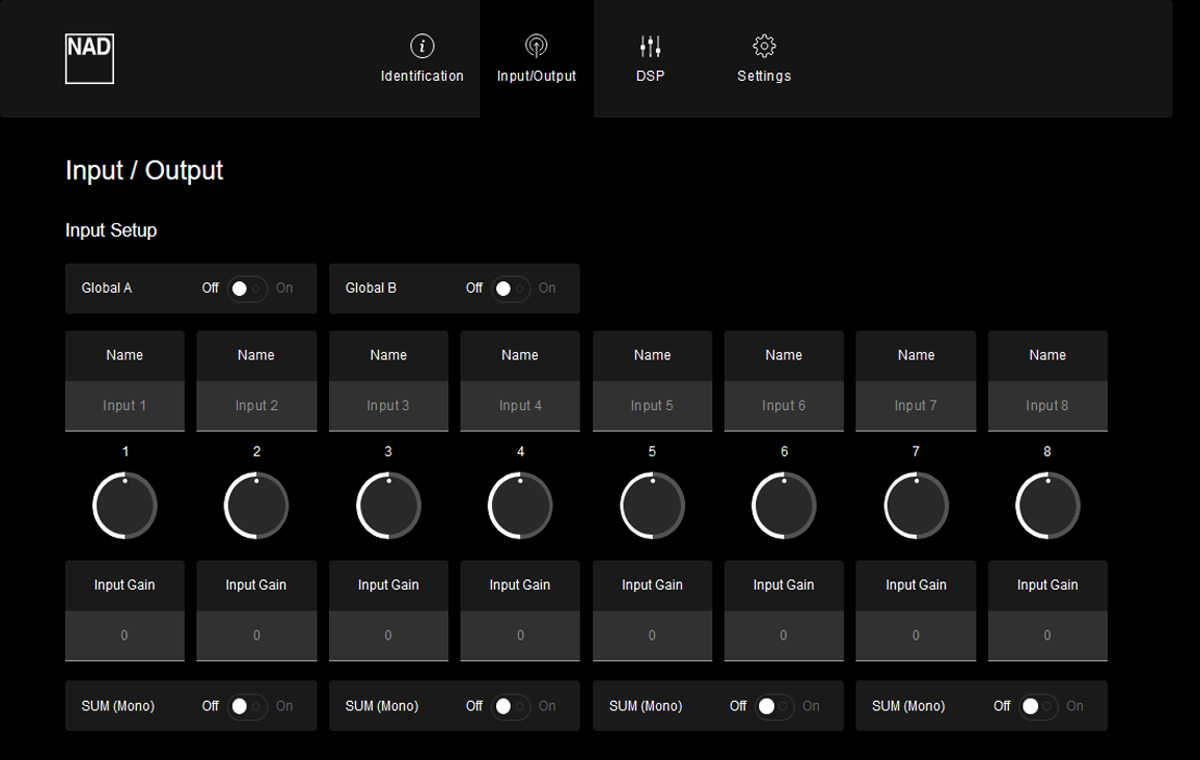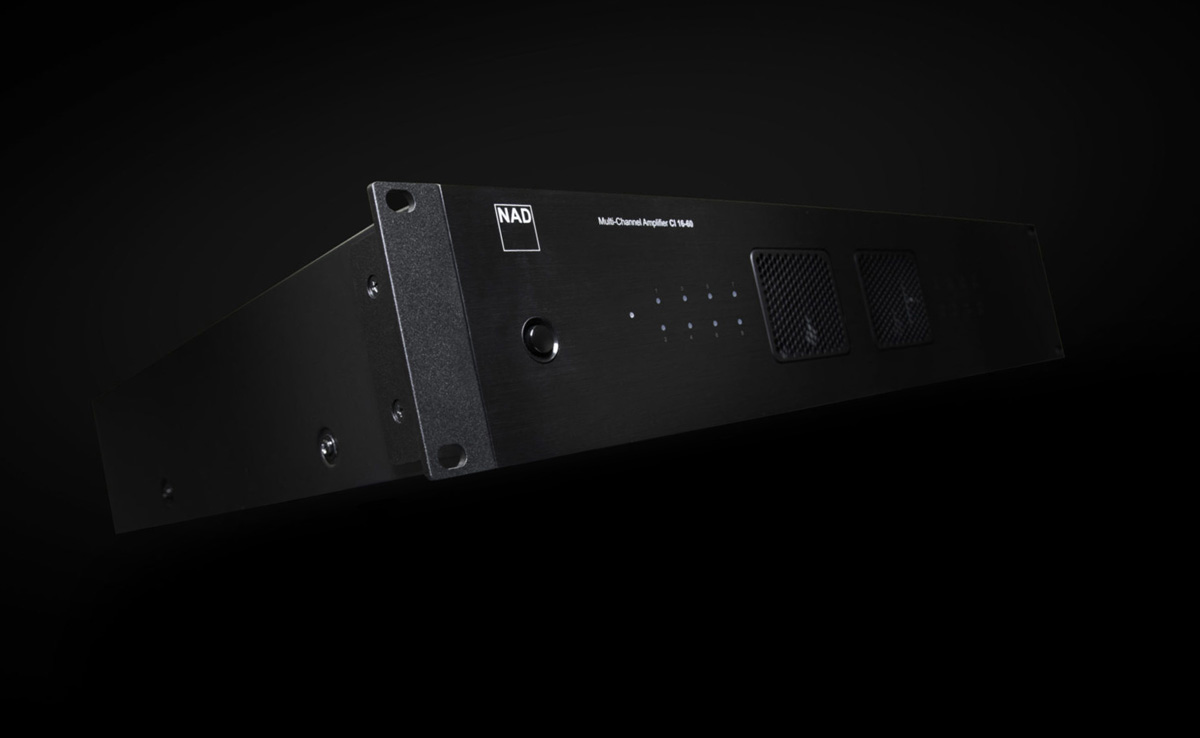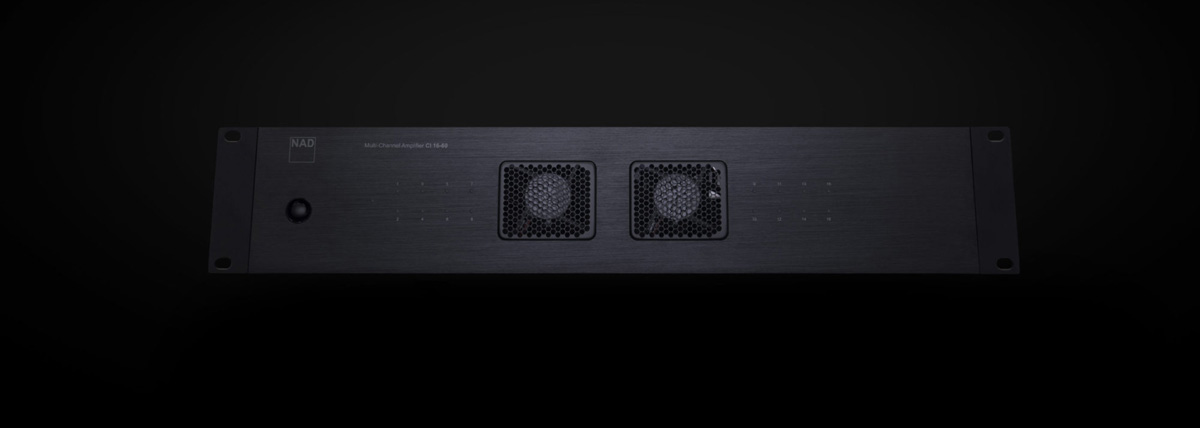NAD Electronics CI 16-60 DSP Multi-Channel Amplifier Review
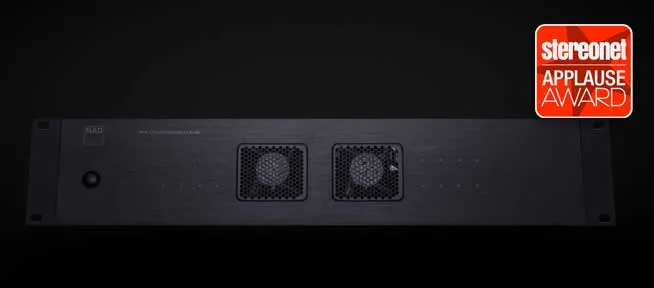
Cris Martinez tries an interesting new custom install amplifier with a famous affordable audiophile name…
NAD Electronics
CI 16-60 DSP Multi-Channel Amplifier Review
£1,999

My very first system, purchased way back in the nineteen-eighties, consisted of a pair of Paradigm bookshelf loudspeakers, a Sony CD player and a NAD 7225pe stereo receiver. I don't remember the model designations of the silver disc spinner or speakers, but do recall that of the NAD because I cherished it for decades. Even as a fledgling enthusiast, I recognised its purity, energy, and simplicity when compared to the heaps of flashy mediocrity that dominated the boutique floor. NAD has always epitomised the saying 'substance over style', providing superior performance and utilitarian features while eschewing superfluous, costly attributes.
Today many of these brands are gone, but NAD still stands strong – largely because it continues to provide great performance and value while adapting to changes in the marketplace. The company has invested heavily in the custom installation domain, which has consistently grown as some parts of the traditional market have been shrinking.
Enter the NAD CI 16-60 DSP amplifier. True to its heritage, this company prefers to do the job exceedingly well, without pomp and circumstance. Punching way above its weight, NAD has always occupied the niche above mass-market receiver brands despite being similarly priced and well below the far more expensive and esoteric audiophile gear. The CI 16-60 DSP amplifier looks poised to be a game-changer and market disruptor, I believe. At £1,999 and with an impressive arsenal of acoustic and installation oriented features, it has competitors above and below its price point locked in its crosshairs.
The manufacturer claims the CI 16-60 DSP "conservatively delivers 60 watts per channel at 8 ohms into all of its 16 channels." In an industry where ludicrous power claims are the norm, we know that NAD regularly delivers substantially more clout than its competitors with significantly higher power ratings. Sixty quality watts are more than enough to drive almost any quality custom speaker; however, for applications or speakers that demand more, each pair of channels is bridgeable to a very potent 140W.

This power is delivered by the highly respected Hypex UcD Class D amplifier modules that NAD says, "will deliver a stable and efficient power with high current capability, produce great load invariant power with extremely low distortion and noise in the audible range, and go toe-to-toe or note-for-note with solid-state". This basically means that when I drive the living hell out of it, it should remain clean, pleasant, and unfatiguing. From personal experience, I can say that this has not been the case with some CI amplifiers, which perform admirably at ambient to moderate listening levels, but when driven to levels that are more pleasing to me and more annoying to my neighbors, the quality quickly deteriorates.
The CI 16-60 DSP is IP-controlled and allows configuration and calibration through a web-based user interface. This offers useful insight into temperature and power status, DSP tailoring, and basic troubleshooting functions like power cycling, factory resetting and updating. For an installer, that means most issues can be addressed remotely and saves a costly trip to the client's location. For the average owner, it represents quick solutions for the most common issues.
Fit and finish are typical NAD – in other words, an example of elegant understatement. At 483x100x435mm and 10.3kg, it's a substantial 2U size, which means it takes up two spaces in a standard rack, has impressive heft, and is finished with an attractive brushed aluminium faceplate. The comprehensive interface relieves the requirement of any ungainly space-consuming controls on the back, where many CI amps hide their controls, allowing enough space between inputs and speaker terminals to make connections easy and uncluttered. The robust block connectors can accept up to 10 gauge cable, a norm in home systems but rare amongst CI amplifiers.
The quick start guide is more than ample for those with an understanding of this type of gear, while the main manual breaks down the steps in easily digestible portions – so as not to overwhelm a junior installer. Wiring is simple, so it's then on to the IP setup where NAD took a page from the Goldilocks fairy tale. Some setups can take a few minutes, but they address only the most basic requirements and lack interesting and useful features. Some err on the other extreme and take hours for obsessive-compulsive and generally useless adjustments. NAD has got it just right, taking perhaps half an hour from start to finish, with each page piquing my interest with useful functions.
For my review, the NAD took the place of my AudioControl Rialto 400 amp, which delivers a claimed 100 watts per channel into 8 ohms - 40W more than the NAD. An Arcam rDAC streamer serves as my main source. In a room that is 6.4m by 4.5m, I'm using two pairs of Totem KIN IC82 in-ceiling speakers that are spaced 2.1m apart and with 2.4m between each left and right channel.
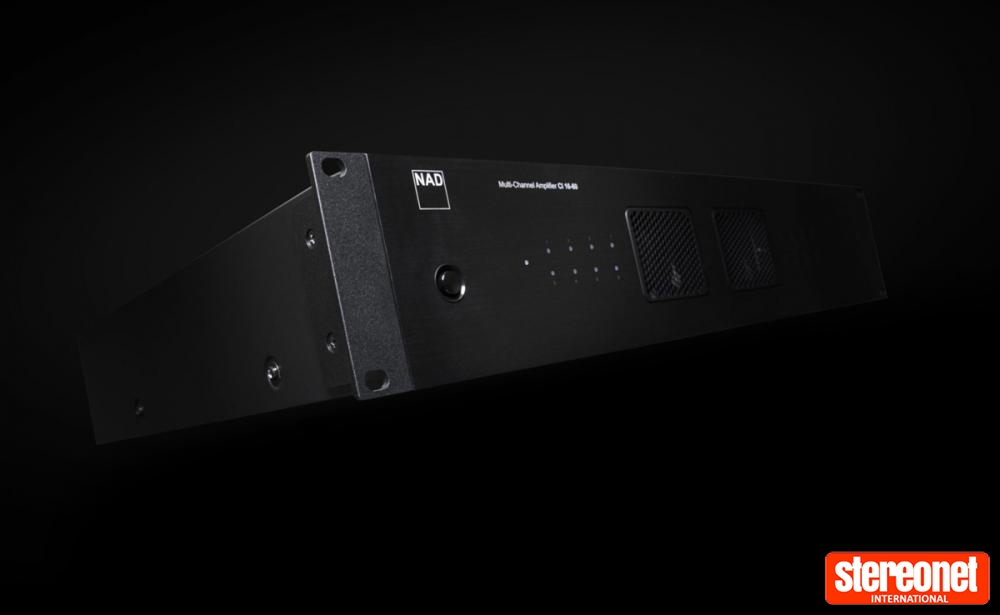
THE LISTENING
The NAD delivers a truthful, involving performance that is pure substance over superficial style. Many CI amps in this category overcompensate for the potential speaker mismatch, poor placement, or customer's misunderstanding of true tonal accuracy with a coloured caricature of the original sound. The NAD sounds like the company's traditional amps always have – true and effortless, dynamic and rhythmic, large and precise. Resolution and intelligibility are exceptional at high and low volumes. A deeper dive with the DSP positively stunned me, but the most underrated sonic characteristic of note is an appreciation that grows the longer you listen.
The glorious city of Montreal has blessed us with smoked meat, poutine and Leonard Cohen – sorry Celine Dion, I am not a fan! I played Leaving the Table, from his You Want It Darker album. There are a variety of instruments played by talented artists on this track, but they all take a back seat to Cohen's legendarily dark vocal stylings. We're generally more sensitive and critical of vocal accuracy than anything else. A voice like his can sound overly nasal or have a muddy resonance if the amp and speaker don't coalesce with proper control and naturalness. It sounded impressive but had a slight resonance and upper mid-bass bloat that disturbed me. It manifested with the AudioControl amp as well.
The brand has always had a reputation for rock-solid amplification and a tonal balance that seems to shake hands with virtually any speaker it powers. With NAD's CI Product Manager's insistence on assessing the Room EQ functionality still ringing in my ears, I accessed the IP address and got stuck in. To audio purists, DSP is a four-letter word in a three-letter acronym. It is equalization, which by definition means an alteration of the original signal and blasphemy to an audiophile. Great for home theater but a pollutant for those seeking unsullied sound, they would say. And they're right if they're referring to traditional systems and speakers, but CI is a different world, with its own unique obstacles to overcome.
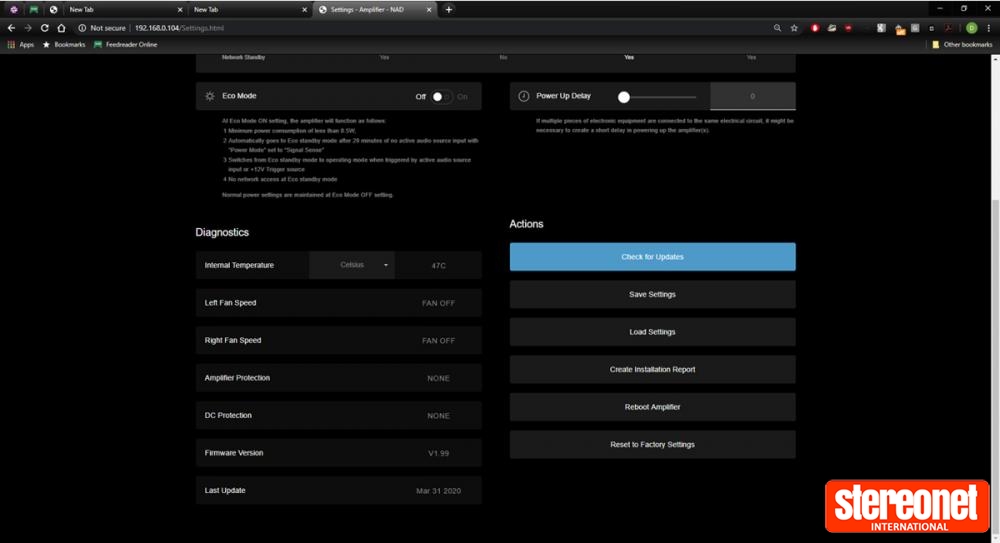
There are three main obstacles that CI systems face that pampered, traditional systems do not – the design of CI speakers, the run lengths, and the room acoustics.
- Standard speakers have meticulously designed cabinets to match the drivers for optimum performance. Most CI speakers – including those being used in this system – are open-back design, so performance varies wildly based on the cavity size and materials within.
- Speaker wire length is kept to a minimum with traditional systems to maintain the integrity of the signal. A 60 meter run over 14 gauge cable is not uncommon in CI.
- An audiophile can spend hours moving their speakers a few inches at a time from the back wall or playing around with the angle of the speaker to the listening area. In CI, you have to contend with lighting and HVAC elements limiting placement options.
DSP allows for the vital correction required to overcome these factors that can transform the performance of a very respectable system into an acoustic mess. I opened the EQ tab of the web menu to generate pink noise and used an app called Spectrum to chart the response curve from a few different locations. The parametric equaliser was relatively easy to use, though the virtual dials could be more responsive and easier to manipulate. I had some difficulty setting the exact frequency I wanted but eventually found that I could type in the desired numbers. With minimal adjustments, I was able to find the perfect measure of gravitas. The soundstage opened as well, filling the room more thoroughly than before. With that, I became an ardent supporter of DSP and sincerely believe that no custom amp should be without the feature.
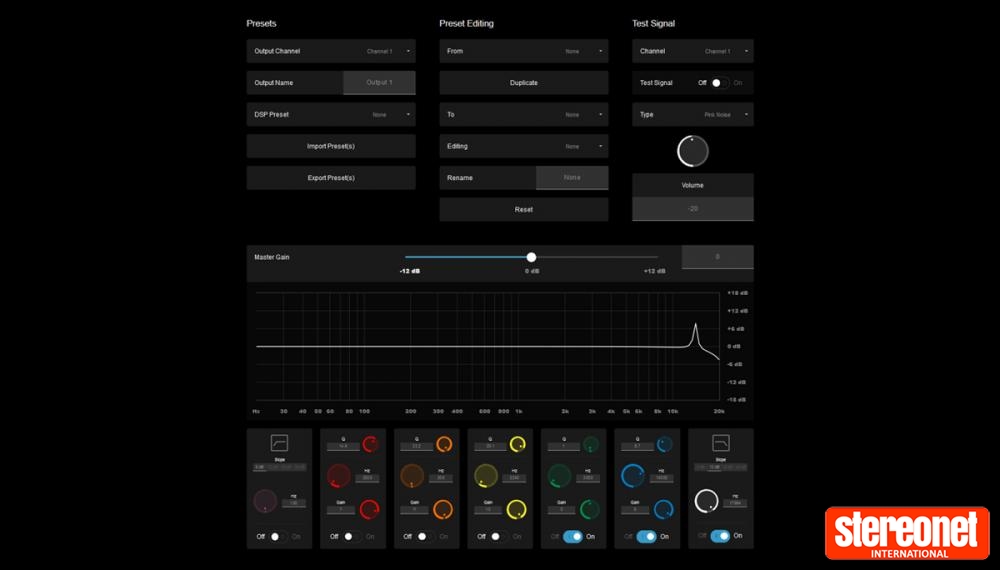
On the other side of the vocal spectrum, although just as dark, is Amy Winehouse. On the cut Valerie from Live Lounge show on BBC Radio 1, her soulful singing is a beautiful counterpart to the electric piano, making this a superb demonstration of clarity and high-frequency control. I like to play it very loud. It never became sibilant, just more sultry and engaging. I generally avoid playing this track too softly because dynamics and intelligibility are normally compromised, but the NAD conveyed no such sacrifice. Vocals and instruments maintained solid presence, and the recording's bandwidth was wide and constant.
I'm not a big classical buff, but I enjoy certain pieces, and it often offers effective tests that the majority of popular music simply doesn't. Stravinsky's The Rite of Spring with Simon Rattle conducting The Berliner Philamoniker is audio's version of test driving a Ferrari around a high-speed race track. It is refined yet roaring and filled with dynamic shifts that snap your neck back in awe and amazement. It requires unerring control, or it will get extremely messy. Unlike other pieces of music I test, I like to play it really loud and loved what I didn't hear. Quiet passages were still quite tangible, silence was absolute, and the dramatic shifts to explosiveness were effortless, showing no strain and complete command.
The bizarre but brilliant Bossa n Roses album is Guns N' Roses' greatest hits performed in a mellow and jazzy, yet completely mesmerizing manner, that transports me back to when I first heard it on my honeymoon in Cartagena, Colombia. It's not an exceptional recording, but I use it more for medicinal, soothing reasons than for critical listening. It possesses instances where highs are slightly sibilant and bass somewhat distended, both being just annoying enough that I would note them every time - this time, I didn't. I listened to the whole album again with greater attention yet still didn't notice them. The NAD was not only precise, dynamic, and controlled, it was mercifully forgiving as well.
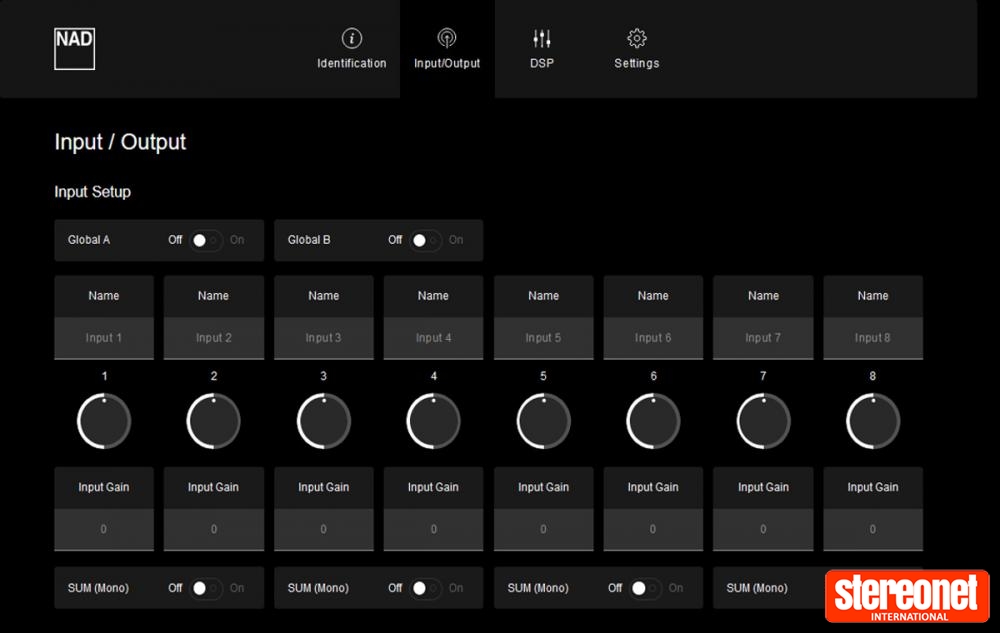
In discussing the amplifier features, NAD's Product Manager for CI mentioned that the CI 16-60 DSP "can effortlessly handle long cable runs. Try a run of a 100m of wire if you have it." Some cables are undoubtedly better at protecting sound and minimizing interference. They're big gauge, have thick sheaths, and perfectly acceptable when run along a floor in a traditional system but not conducive to running through walls. In CI, 14 gauge wire with a sheath designed for physical protection rather than signal loss rules. In this case, amps can't control the woofers as effectively due to wire resistance reducing the damping factor, resulting in distortion manifesting at much lower volumes. I had a spare spool, so the challenge was accepted.
I added 60m of basic 14 gauge to two of the speakers in the room and left the other two with the existing length of approximately 15m. This allowed me to compare the performance between the two pairs with minor difficulty and used the same pieces of material. I had to go back and forth a few times to be certain that the pair on the longer run played marginally lower. No surprise there, but when I pushed them hard, I never detected any audible distortion. They played as loudly as I wanted and in a clear, uncontaminated manner that offered no hint of the wire length.

THE VERDICT
 Once again, NAD has pulled off a clever balancing act regarding price, performance and features with the new CI 16-60 DSP. Perhaps even more impressively, it satisfies the needs and desires of the seasoned installer and critical listener. The former will appreciate the robustness that allows superior performance in all rooms regardless of cable length, and the IP access to key setup parameters and remote troubleshooting to save time and money. Once perfected and tailored as required with DSP, this NAD sounds like the company's traditional amplifiers, which is no bad thing. Despite the CI designation, the CI 16-60 DSP stays true to its NAD pedigree.
Once again, NAD has pulled off a clever balancing act regarding price, performance and features with the new CI 16-60 DSP. Perhaps even more impressively, it satisfies the needs and desires of the seasoned installer and critical listener. The former will appreciate the robustness that allows superior performance in all rooms regardless of cable length, and the IP access to key setup parameters and remote troubleshooting to save time and money. Once perfected and tailored as required with DSP, this NAD sounds like the company's traditional amplifiers, which is no bad thing. Despite the CI designation, the CI 16-60 DSP stays true to its NAD pedigree.
Compared to Russound, Nuvo, and other similarly priced CI amplifiers, NAD obliterates them as a middleweight would a lightweight. They are slightly less expensive but not enough to warrant the gap in performance and feature set. Compared to the heavyweights like Lexicon DD8 Plus and Sonance DSP 8-130 MKII, the NAD may not want to go toe-to-toe in a battle based exclusively on power.
But it has more than enough smarts and skill to compensate for the slight disadvantage in brute force. Competitors at both higher and lower price points should be afraid, while installers and all walks of end-users should be happy. If you're in the market for this sort of product, then hear it if you possibly can.
For more information visit NAD Electronics
Cris Martinez
The seemingly harmless decision of working at a high end audio boutique drove Cris to unwillingly become the unfortunate friend to whom all go for tech support and free service. Thinking he could escape this curse by subsequently starting a career in custom installation made it worse. He loves consumer electronics but hates his friends.
Posted in: Amplifiers | Multi Channel | Applause Awards | 2021 | Home Theatre | Integration
JOIN IN THE DISCUSSION
Want to share your opinion or get advice from other enthusiasts? Then head into the Message
Forums where thousands of other enthusiasts are communicating on a daily basis.
CLICK HERE FOR FREE MEMBERSHIP
Trending
applause awards
Each time StereoNET reviews a product, it is considered for an Applause Award. Winning one marks it out as a design of great quality and distinction – a special product in its class, on the grounds of either performance, value for money, or usually both.
Applause Awards are personally issued by StereoNET’s global Editor-in-Chief, David Price – who has over three decades of experience reviewing hi-fi products at the highest level – after consulting with our senior editorial team. They are not automatically given with all reviews, nor can manufacturers purchase them.
The StereoNET editorial team includes some of the world’s most experienced and respected hi-fi journalists with a vast wealth of knowledge. Some have edited popular English language hi-fi magazines, and others have been senior contributors to famous audio journals stretching back to the late 1970s. And we also employ professional IT and home theatre specialists who work at the cutting edge of today’s technology.
We believe that no other online hi-fi and home cinema resource offers such expert knowledge, so when StereoNET gives an Applause Award, it is a trustworthy hallmark of quality. Receiving such an award is the prerequisite to becoming eligible for our annual Product of the Year awards, awarded only to the finest designs in their respective categories. Buyers of hi-fi, home cinema, and headphones can be sure that a StereoNET Applause Award winner is worthy of your most serious attention.

